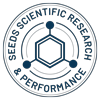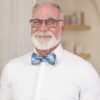Sleep Basics
Table of Contents
Unlock access to this full article with SSRP Membership.
How well we sleep—in terms of both duration and quality—plays a vital role in how well our brain and body functions. Sleep enables the brain to clear out toxins that build up during the day; reset hormone and other neurochemical levels; consolidate memories important for learning and other cognitive functions; and protect against illness and disease. Sleep is also paramount for maintaining stable moods and emotional regulation.
At a cellular level, all of these physiological activities enable the brain and body to maintain overall homeostasis. In this way, sleep is a regulatory process. But to truly appreciate how to maximize sleep quality so that you give your brain and body enough time to rest, reset, and restore, you also have to keep in mind that sleep is complicated.

Sleep Basics
Sleep involves two underlying biological processes: our sleep drive, the physical need for sleep that’s as strong and necessary as the drive to eat; and our inner clock that cues us to go to sleep, which we refer to as the circadian clock.
These two distinct but interrelated processes work in tandem so that we go to sleep, stay asleep, and wake up feeling refreshed. However, a lot of people experience difficulty in one or more ways: they have trouble falling asleep, have trouble staying asleep, dream excessively, or move during their sleep. Any one of these can disrupt sleep quality, which in turn affects how well the brain and body reset during the night.
Throughout a night, we cycle through four stages or states of sleep, with each stage presenting its own brain wave (as measured by an EEG) that reflects how much or how little brain activity is happening within that stage:
- Stage N1 (NREM stage 1)
- Lightest stage of sleep, lasting from one to seven minutes
- Comprises about 5% of total sleep time
- Easy to wake someone up
- Characterized by slow eye movements and relaxed muscles
- Brain waves transition from wakefulness to sleep patterns
- Stage N2 (NREM stage 2)
- Deeper sleep, lasting 10 to 25 minutes in the first cycle
- Makes up about 45% of total sleep time
- Body temperature drops, muscles relax further
- Breathing and heart rate slow down
- Brain waves show sleep spindles and K-complexes
- Bruxism (teeth grinding) may occur
- Stage N3 (NREM stage 3)
- Deepest non-REM sleep, lasting 20 to 40 minutes
- Comprises about 25% of total sleep time
- Difficult to wake someone up
- Characterized by slow brain waves (delta waves)
- Important for physical restoration, tissue repair, and immune system strengthening
- REM sleep
- Final stage of the sleep cycle, lasting 10 to 60 minutes
- Makes up about 25% of total sleep time
- Rapid eye movements occurring behind closed eyelids
- Brain activity similar to wakefulness
- Muscles paralyzed (except for occasional twitches)
- Dreaming typical during this stage
- Important for cognitive functions and memory consolidation
A complete sleep cycle lasts approximately 90 to 110 minutes, and people typically go through four or five cycles per night. What’s important to understand is that disruptions in sleep are related to, but are different from, another important dimension to sleep: circadian clock disruption.
Sleep Stages
In general, sleep is either light or deep and is either REM or non-REM, the latter which refers to whether sleep includes dreams or not We cycle through four stages or states of sleep, with each stage presenting its own brain wave (as measured by an EEG) that reflects how much or how little brain activity is happening within that stage.
Stage 1, which is relatively short, occurs when you first fall asleep; your heartbeat and breathing slow down and your muscles relax. Stage 2 is the longest part of the sleep cycle; it’s characterized by light sleep, a drop in body temperature, cessation of eye movements, and a slowing down of brain wave activity. Stage 3 is a period of deep sleep and happens in the first half of the night; this is the type of sleep that’s most acutely tied to the feeling we have of waking up refreshed.
SSRP Subscriptions
Unlock Full Access to Articles, Research, Courses & More From Top Cellular Medicine Provided with an SSRP Subscription.
Share this post:
Stay on the Cutting Edge
Highly Curated Cellular Medicine Content, Research, Articles and More.

William Seeds, MD


